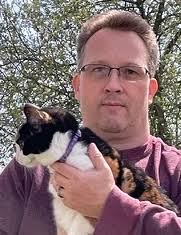There are many things that make fall time in Indiana great. One of those things is the drastic change in leaf color that can be seen while driving down the road. Another is the sweet, homemade goodies that can be made from fall time fruits.
The first fall time fruit that individuals often think about is apples. There are over 7,500 known varieties of apples in the world with over 2,500 varieties grown in the United States. Most scientists think that apples originate from somewhere in Central Asia, in a mountain range called Dzungarian Alps. Apples came to North America in 1625. Today, we are lucky to several different apple varieties grown within the state of Indiana.
One of the most popular apple varieties is Red Delicious. This is a striped to solid red apple with a rich, sweet taste. It was discovered in Iowa. If you would rather enjoy a green apple, then you might consider a Crispin. Crispin apples have a nice green skin color and are known for their great crunch. In terms of a yellow apple, you might consider a Ginger Gold. This variety was discovered in Virginia. It is similar to the Golden Delicious in appearance and taste, but becomes ready to harvest about 6 weeks earlier.
Just like apples, there is another fall time fruit ready that individuals are currently harvesting in Putnam County. That fruit is the pawpaw. Pawpaw trees are native to the Midwest and the fruit is sometimes referred to as the Indiana banana. They have attractive foliage. Flowers develop in early spring before leaves develop. They resemble raw flesh, attracting carrion flies and beetles, which act as their pollinators.
Pawpaw trees fruit in late August to early October. Fruit size can vary by variety and pollination success. They can be the size of a golf ball or as large as a baking potato. Some people may be allergic to them. Pawpaw seeds are large and should not be consumed. Pawpaw seeds contain an emetic, which causes vomiting. Fruit should not be eaten unless it is fully ripe. If you want to know more about pawpaws, consider watching the videos on pawpaw growth and cooking with pawpaws found on the Purdue Extension-Putnam County Facebook page (posted in September).
In the coming weeks, there is another fall time fruit that will be ripe and ready for harvest. That fruit is the persimmon. Persimmons are native to the southeastern United States. They grow wild over much of southern Indiana. Often, you will find the native variety growing in abandoned fields and fence rows. The overall shape of a native persimmon tree is pleasing to the eye.
The most beneficial part of a native persimmon tree is the fruit that it produces. The fruit of the native persimmon is oval and has tiny leaves called calyx that surround the location where it attaches to the tree. The calyx is considered to be decorative. Once the fruit is ripe, it will become orange in color and be about 1/2 inch in diameter. If you eat the fruit before it is ripe, it will make you pucker your mouth. Once it is ripe, it will be a sweet, mellow taste. Be on the lookout for videos about growing persimmons and using persimmons on the Purdue Extension-Putnam County Facebook page (anticipated posting in late October/early November).
Visit our homepage at www.extension.purdue.edu/putnam or you can contact the local Purdue Extension Office by calling 765.653.8411 for more information regarding this week’s column topic or to RSVP for upcoming events. It is always best to call first to assure items are ready when you arrive and to RSVP for programs. While many publications are free, some do have a fee. Purdue University is an equal access/equal opportunity institution. All times listed are Eastern Time.
Upcoming Events:
September 28 – Fall Walking Group, 9am, Big Walnut Sports Park, register at
765-301-7641
October 5, 12, 19, 26 – Fall Walking Group, 9am, Big Walnut Sports Park, register at
765-301-7641
October 19 – Medicare & Diabetes, Fairgrounds, 2 pm, register at 765-653-8411
October 19 – Pork: The No Hogwash Protein webinar, 12 pm register at
https://tinyurl.com/WIAWebinars21
October 27, November 3, 10, 17 – Grass to Garden Program, virtual, 6 – 9 pm, $50,
register at 765-653-8411







